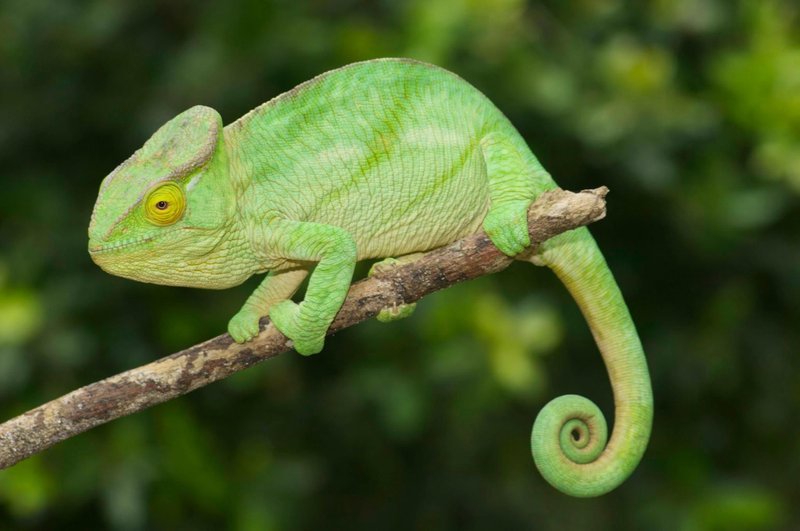
Let’s take a moment to think this through. Owning a pet should be an enjoyable experience, not one that leaves you scratching your head in confusion. Chameleons, especially the Parson’s variety, bring their own set of challenges. They require specific care, so it’s essential to understand what you’re getting into before you jump in. Let me explain what you need to consider.
Understanding the Parson’s Chameleon
The Parson’s chameleon, scientifically known as *Calumma parsonii*, is one of the largest chameleons you can find. Originally from Madagascar, these beauties can grow up to 2 feet long! That’s like having a mini-lizard that’s bigger than a lot of pets. With their distinct colors and impressive size, they can be a show-stopper in your home.
Visually, they have a stocky body and a somewhat pronounced helmet-like crest on their heads. A fascinating feature of the Parson’s chameleon is how they can shift their colors based on mood or environment. Think of it as their own form of communication! However, to appreciate these color shifts, a proper environment is essential. Poor living conditions can lead to stress and health issues, which means you have to be committed to their care.
Care Requirements
Here’s the thing—caring for a Parson’s chameleon isn’t as simple as throwing some food in a bowl. They need a carefully curated habitat to thrive. Temperature, humidity, and lighting are crucial factors to consider.
– Temperature: Chameleons are ectothermic, meaning they rely on their surroundings to regulate their body temperature. A basking spot should be around 90°F, while the cooler areas can dip to about 70°F.
– Humidity: These guys come from rainforests, so they thrive in high humidity. A humidity level of 50-70% is ideal. Mist their enclosure daily to keep it moist and comfortable.
– Lighting: Chameleons need UVB lighting for at least 10-12 hours a day to synthesize vitamin D3, which helps with calcium absorption. Without it, they can develop serious health issues.
Setting up your chameleon’s home might sound daunting—but honestly, once you have a plan, it gets easier.
Feeding Your Parson’s Chameleon
Feeding a Parson’s chameleon is a bit different than tossing a few pellets in a dish. They are primarily insectivores, meaning their diet mainly consists of insects. You’ll need to provide a variety of food:
- Crickets
- Locusts
- Roaches
- Mealworms (in moderation)
It’s important to gut-load the insects—this means feeding them nutritious foods before offering them to your chameleon. This way, your pet is getting a balanced diet, and you’re not just feeding them empty calories.
Additionally, sprinkling insects with a good calcium and vitamin supplement is recommended, especially if you want to keep your Parson’s chameleon healthy and vibrant. Think of it as making sure they eat their veggies, but in this case, it’s more about making sure their bugs are packed with nutrients.
Handling and Socialization
You might be wondering, “Can I hold my Parson’s chameleon?” The answer is a bit complex. Chameleons are not like dogs or cats; they don’t seek affection in the same way. In fact, stress can be a significant factor in their health.
When you first bring your chameleon home, it’s best to let them settle in for a few weeks without too much interaction. After they seem comfortable, you can attempt gentle handling. Always approach them slowly and avoid sudden movements. Some chameleons will tolerate handling better than others, but be prepared for a bit of hissing or a defensive stance.
Think of it this way: you wouldn’t want someone to barge into your home and start picking you up, right? They appreciate their space, so be respectful of that.
Common Health Issues
Like any pet, Parson’s chameleons can face health problems, especially if their care isn’t spot-on. Some common issues include:
– Respiratory infections: Often caused by poor humidity or temperature. Make sure your enclosure is properly set up.
– Metabolic Bone Disease (MBD): This occurs from a lack of calcium or UV exposure. Regularly dusting their food with calcium supplements can help.
– Dehydration: Ensure they have a consistent water source. Many chameleons prefer to drink water droplets rather than from a bowl, so misting the enclosure is crucial.
If you notice your chameleon acting unusually lethargic or not eating, it’s best to consult an exotic vet familiar with reptiles.
Is the Parson’s Chameleon Right for You?
So, after all this, are Parson’s chameleons a good fit for beginners? It really depends on your commitment and readiness to dive into their care. They require more attention and specialized care compared to a traditional pet like a cat or dog.
– Commitment: Make sure you can provide a high-quality habitat and be consistent with feeding and care.
– Time: If you have the time to research and learn about their needs, you might find great satisfaction in having one as a pet.
– Environment: Does your home allow for a chameleon-friendly setup? Ideally, you’ll need space for an enclosure that maintains the right climate.
If you’re up for the challenge and excited to create the perfect home for a Parson’s chameleon, it could be a rewarding experience. Just remember, they’re not the pet for everyone!
In conclusion, the Parson’s chameleon can be a fascinating pet for those willing to put in the effort. While they might not be the best choice for someone looking for a low-maintenance animal, their vibrant colors and unique behaviors can make for a rewarding pet experience.
If you’re ready to embrace the challenge and learn about their needs, a Parson’s chameleon can bring a touch of the wild into your life. Just remember—like any pet, they deserve your time, care, and attention. Happy chameleoning!

